Let’s join the American Vacationers who Flocked to Cuba
In 1919, the passage of the Eighteenth Amendment and the Federal Volstead Act to enforce the ban on the manufacture and sale of all alcoholic beverages in the United States, opened the door for Cuba becoming a major tourist destination for Americans. Cuba’s capital, Havana, was seen as an exotic tropical city. It offered travelers the forbidden pleasures of wine, women, song, and gambling. American bartenders were imported to staff Cuban bars catering to the tastes of thirsty American travelers. Havana billed itself as the Monte Carlo of the Americas.
Havana had the advantage of being located off the East Coast of the United States. It was just 198 nautical miles from Miami, already a popular tourist destination and later 228 miles by air. Beginning in the 1920s many American companies that were already dominant players in the Cuban economy, began investing in Cuba’s tourist industry. Improvements in air travel, opened Cuba to a wider audience after World War II.
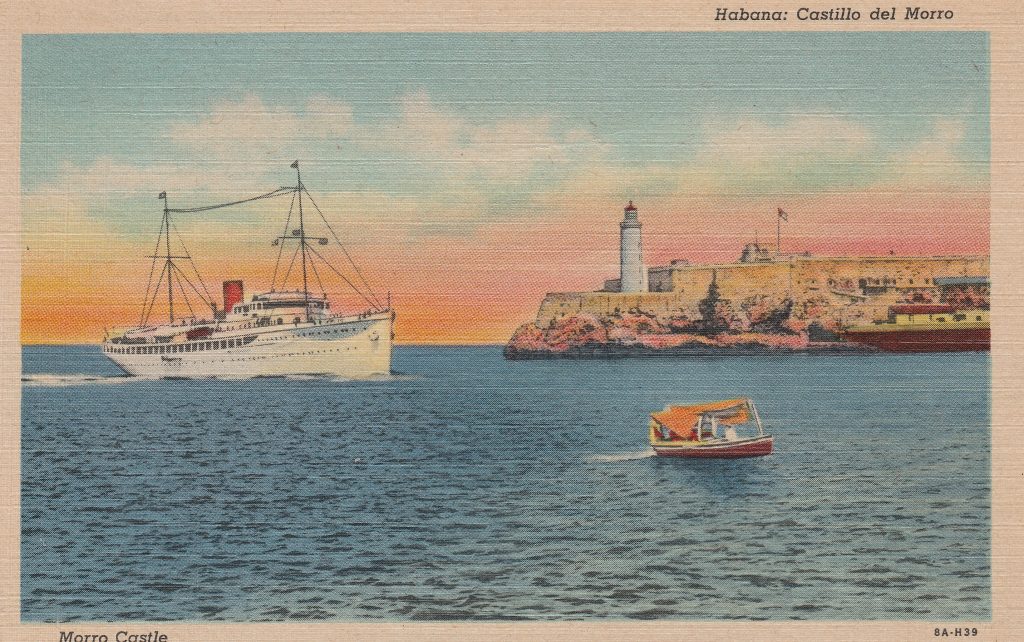
Built in 1589, the Morro Castle is perched on a promontory overlooking Havana Harbor. The fortress that can be seen from several miles out at sea, guarded the entrance to the harbor and served as a navigation landmark that Americans arriving by steamship would see on their way into port. For centuries Morro Castle protected the city from raids by pirates, the French, and the English. The original castle was replaced by another that became a popular tourist attraction.
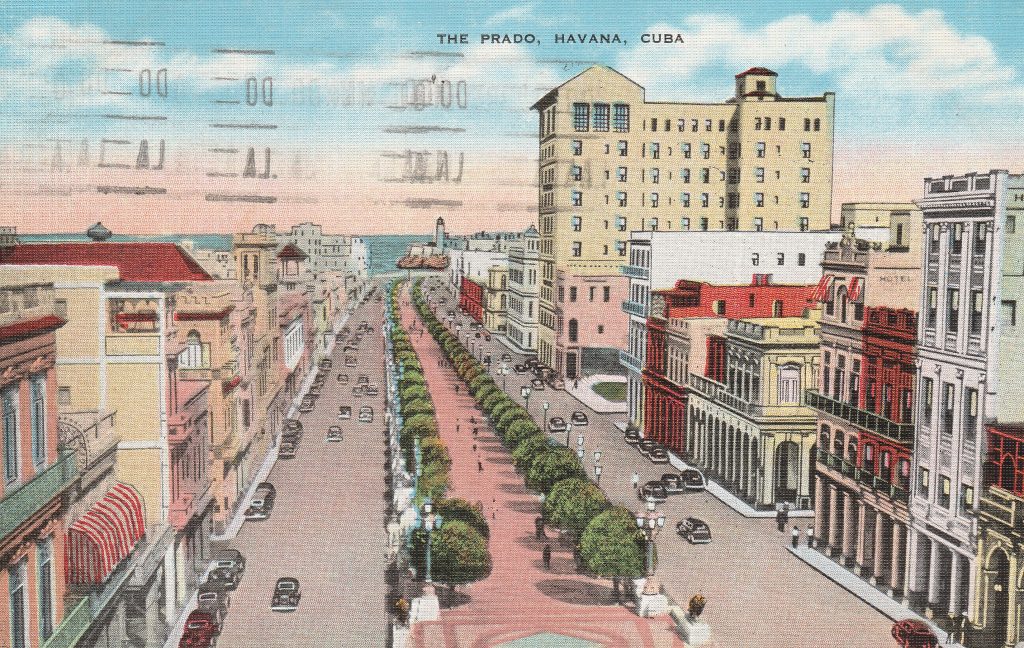
Paseo de Prado was the first European style grand boulevard constructed in Havana. El Prado, as Cubans call it, separates Old Havana (the site of the original walled city) and Centro Havana, the modern city. Statues and marble benches lined the street. During the first half of the twentieth century, it was a fashionable residential and commercial district. Many American companies-maintained offices in this district. It is home to the Sevilla-Biltmore Hotel, once Havana’s most fashionable. Since the 1959 Cuban revolution, the boulevard has deteriorated and is a shadow of its former self.
The Hotel Sevilla, located along the Paseo de Prado, was built in 1908. It started as an ornate four-story Moorish Revival structure. In 1919, it was bought by New York hoteliers and renamed the Sevilla-Biltmore. In 1929, an adjoining ten story wing was added, complete with a rooftop ballroom, making it the most luxurious hotel in Havana. It often played host to American mobsters like Al Capone and Lucky Luciano.
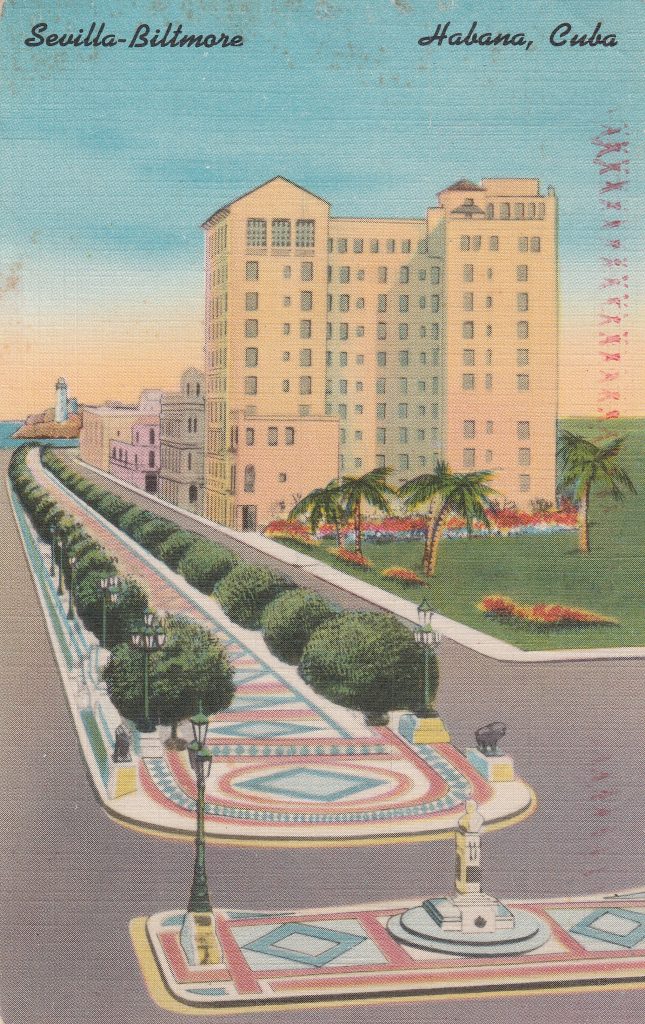
The Sevilla-Biltmore prospered during the 1940s and ‘50s when air travel became more dependable, and the flow of American tourists continued unabated. A popular draw was the hotel’s casino. The casino was partially owned by the American mobster, Santo Trafficante, Jr. of Florida.
As Fidel Castro’s army neared Havana, Cuban President Batista fled the country on New Years Day 1959. Revolutionaries stormed the hotel and destroyed the casino. Today the hotel is operated by the Cuban government.
The Hotel Nacional de Cuba in Havana opened in 1930 with 457 rooms and sixteen suites. Its location on a hilltop in the seafront El Vedado district offers its guests commanding views of the harbor, seawall, and the city. Set on thirteen lushly landscaped acres, the hotel was an eclectic mix of Moorish, Roman, Sevillian, and Art Deco design elements. The lobby and public rooms were richly decorated.
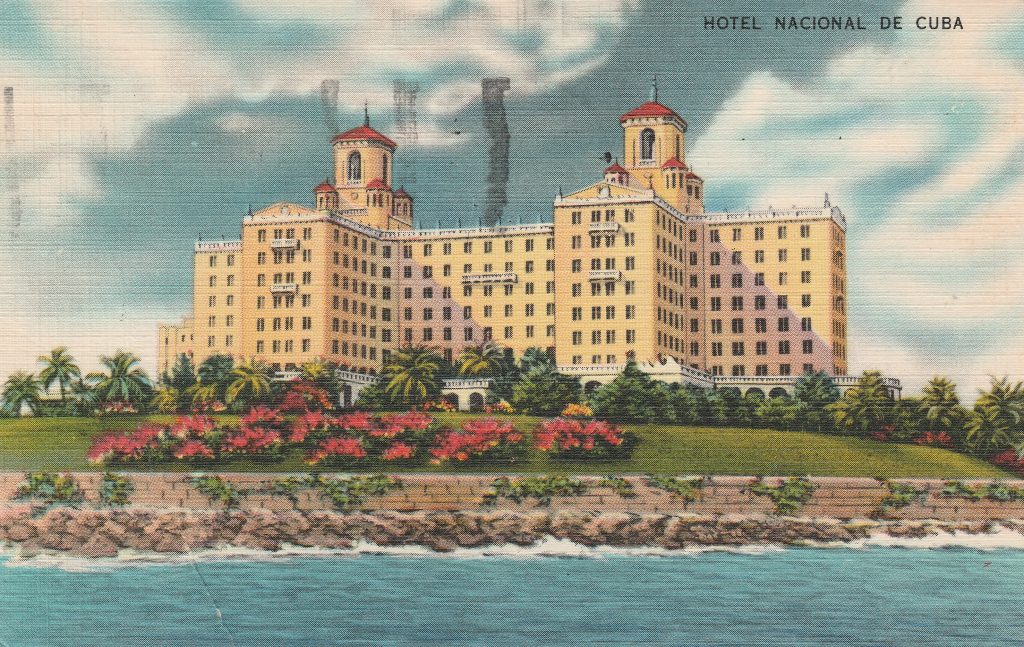
The Hotel Nacional was designed, financed, built, and managed by U.S. interests. Its bar was famous for its rum cocktails. In the hotel’s heyday (the 1950s), American mobster Meyer Lansky and his brother opened a luxurious casino fronted by Las Vegas casino operator Wilbur Clark. It gave American travelers all the comforts of home and was the leading hotel in Havana until the Cuban Revolution.
Fidel Castro nationalized the hotel in 1960 and shuttered the casino. In 1991, Castro opened Cuba to foreign tourists in a bid to earn hard currency for purchases in global markets. The Hotel Nacional was renovated in 1992 and today is the most elegant hotel. Visitor reviews report the guest rooms are the nicest in Havana but are dated and not up to international standards.
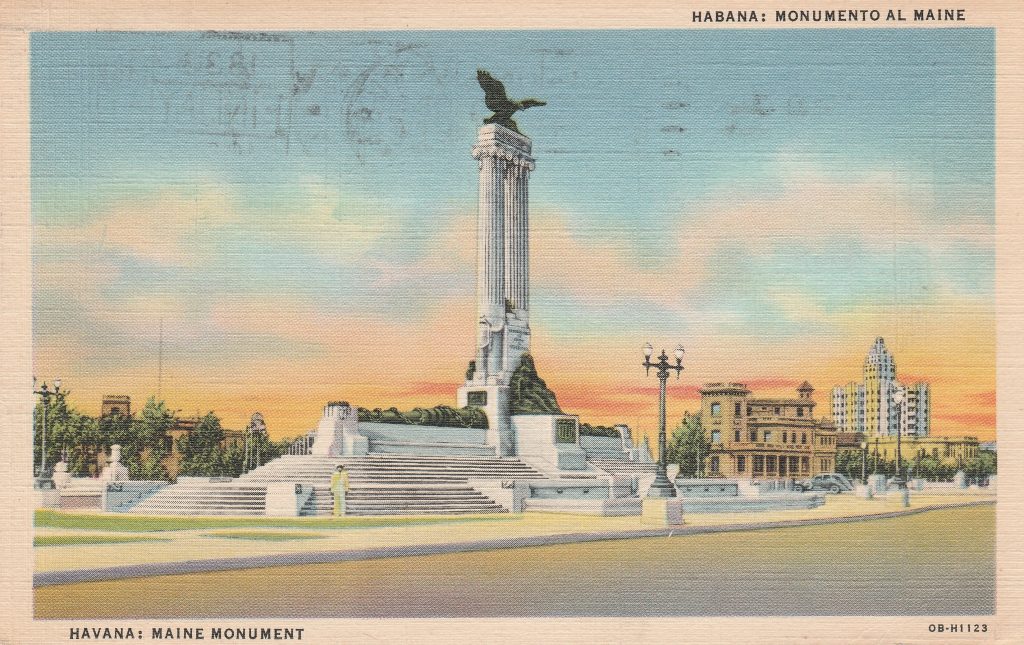
The battleship USS Maine was anchored in Havana harbor on February 15, 1899, when a massive explosion rocked the ship and she sank within minutes, killing 268 of her officers and crew. A monument to the Maine’s victims was erected by the Cuban government on Malecon Boulevard near the Hotel Nacional. Dedicated on March 8, 1925, the monument consisted of two forty-foot-tall Ionic columns topped by a large bronze eagle. At the base of the monument were busts of President McKinley, President Theodore Roosevelt, and General Leonard Wood (first Governor General of Cuba).
In 1938, a bust of U.S. Army officer, Andrew Summers Rowan was added to the Maine monument. Rowan had met with the Cuban rebels before the outbreak of the war and assessed the military situation for the War Department. Also, at the base of the monument, were two cannons and a section of Maine’s anchor chain. In 1961, the Cuban government deemed the eagle and busts of the four Americans as “symbols of imperialism.” They were removed.
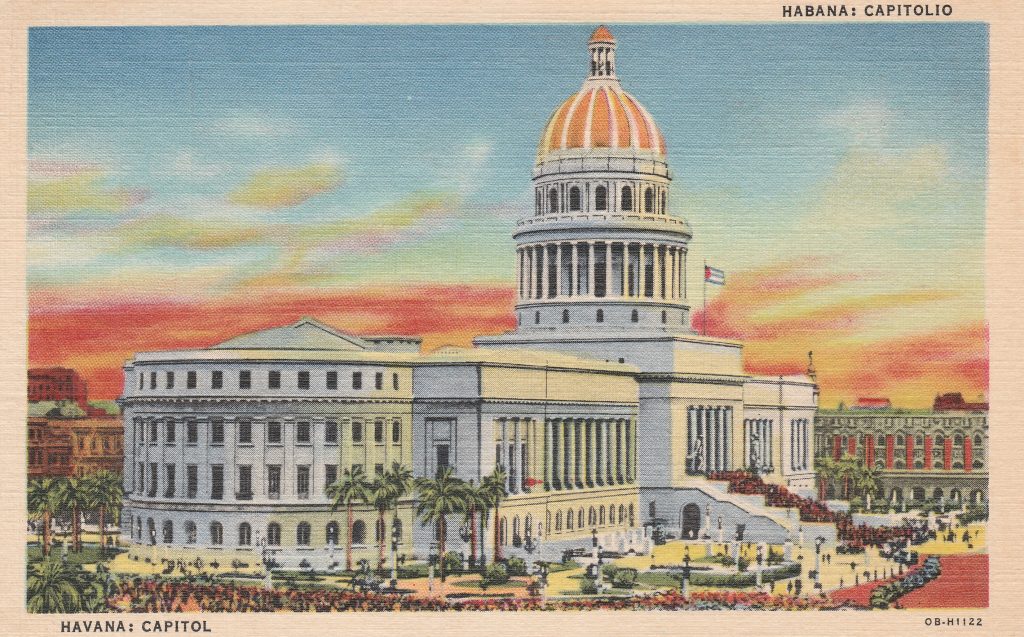
El Capitolio, the National Capitol building is located on the Paseo del Prado in the center of Havana. Completed in 1929 after three years of construction, it is often compared to the U.S. Capitol in Washington, DC, but in fact is modeled after the Pantheon in Paris. Upon completion and until the late 1950s, it was the tallest structure in Havana. Then and today the capitol dominates Havana’s skyline. Over 5,000 workers built this grandiose structure with its extravagant and richly decorated interiors.
Under the dome is the third largest indoor statue in the world, a 56+ foot tall statue of La Republica that represents the mythic Guardian of Work and Virtue. The statue is bronze, covered with gold leaf and weighs 30 tons. Only the statue of Abraham Lincoln in Washington and the Budda in Nara Japan are larger.
After the Cuban Revolution, the Cuban Congress was abolished, and a new government building was constructed in La Plaza de la Revolucion. El Capitolio housed the Cuban Academy of Sciences and the National Library of Science and Technology from 1962 until 2013. From 2013 until 2019 the building underwent restoration for the 500th anniversary of Havana’s founding.
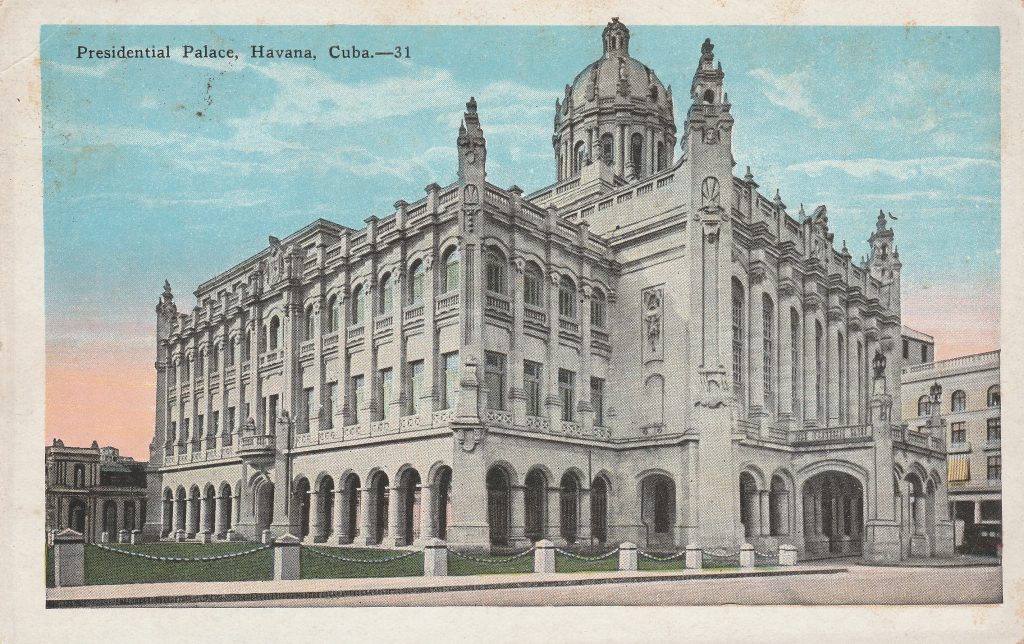
The Neo-Classical Cuban Presidential Palace housed Cuba’s presidents from 1920 until 1959. Designers from New York’s Tiffany & Company decorated the palace’s opulent marble interior. El Salon de los Espejos is a replica of the Hall of Mirrors in the Palace of Versailles. The Golden Hall is clad in yellow marble. Since 1974, the Palace has housed the Museum of the Revolution, a propaganda showcase for the Cuban regime.
Havana’s Marianao District offered Americans winter horse racing at the Oriental Park Racetrack. It was also home to the elegant Gran Casino Nacional, designed to rival the casinos on the French Riviera. It succeeded in attracting many wealthy gamblers. The massive fountain in front of the casino became a Havana landmark. The casino’s dress code required evening dresses for women and formal wear for men. Even though it was called the Casino Nacional, most Cuban citizens were banned from entering unless they met strict income requirements. The casino was known for its lavish show featuring exotic dancers and high energy Latin music.
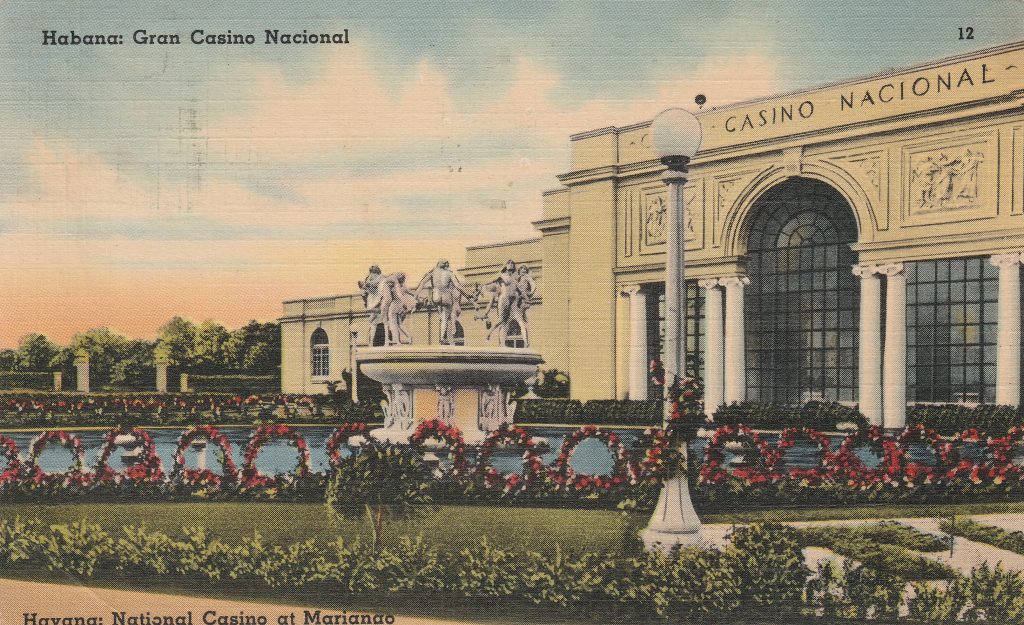
Jim and Irma sent the above postcard of the casino in February 1947 to their shivering friends back home in Torrington, Connecticut. Their three sentences sum up the experiences of Americans visiting Havana before the Cuban Revolution. “We’ve had glorious weather and a grand time. Had a wonderful evening out at this casino. What a show!”
Few Americans ventured outside Cuba’s glittering capital to visit the countryside. There, most workers were employed for only three months during the sugar harvest. Income inequality in the countryside, rampant corruption within the government of President Fulgencio Batista, and political repression laid the groundwork for the Cuban Revolution, ending Havana’s ability to offer the high-life to American tourists.
great post – thank you
Depth of coverage makes a clearer understanding of Cuban history. Cards in my album now present a sound education in what previously was lacking. Bravo!
I spent two weeks with my college’s tour group in Cuba in January 1978. One of the souvenirs I purchased was a T-shirt featuring a statue on the Paseo del Prado.
I recall an article from about 10 years ago in the Richmond Times Dispatch. The article was about the A.H. Robins pharmaceutical company which was a prosperous Richmond business. Robins most famous product was Robitussin cough syrup.
The article included a picture from the 1950’s showing the entire staff leaving for a “Havanna Holiday.” Apparently trips to Cuba were so affordable that a company could splurge on group vacations for a large part of its staff.